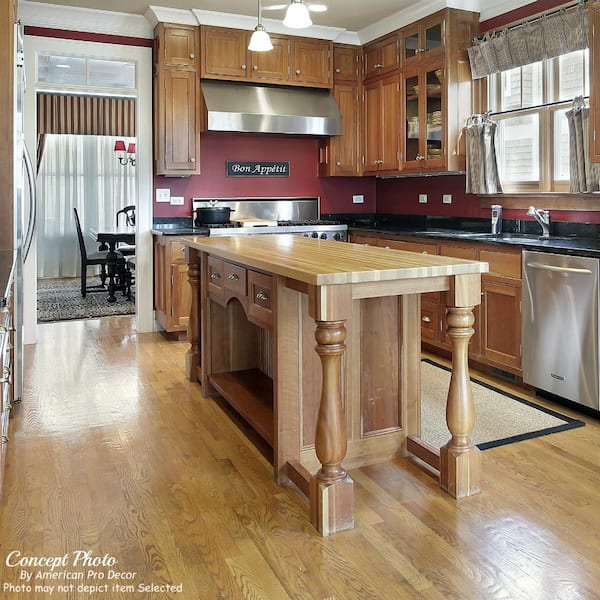Depend On Expert Craftsmanship for Tailored Legs For Kitchen Island Ideas
Depend On Expert Craftsmanship for Tailored Legs For Kitchen Island Ideas
Blog Article
A Guide to Selecting the Perfect Legs For Cooking Area Island for Your Home
Picking the suitable legs for your cooking area island is a nuanced choice that affects both the capability and visual allure of this central room. As you take into consideration these elements, it comes to be evident that the appropriate legs can transform not just the look of your cooking area but likewise its functionality for years to come.

Comprehending Kitchen Island Legs
When choosing legs for a cooking area island, it's necessary to recognize their functional and visual functions in the general design. The legs function as an essential support group, making sure stability and durability for the island, which typically functions as a workspace, dining area, or gathering area. Therefore, the selection of material and building strategy have to be robust sufficient to stand up to daily use and potential wear.
In enhancement to their structural responsibilities, legs contribute considerably to the island's aesthetic charm. They can improve the cooking area's style, whether via conventional, modern, or eclectic layouts. The height and percentage of the legs are likewise essential factors to consider; they have to balance with the island's counter top height while guaranteeing comfy seating for those using the area.
Moreover, the leg layout can affect the general circulation of the kitchen. Open, airy leg styles can develop a feeling of agility, while strong, considerable legs might convey a more based and stable aesthetic - Legs For Kitchen Island. Comprehending these aesthetic and useful facets will certainly direct home owners in making informed options that complement their cooking area's design and boost its usability
Popular Styles and Materials
The option of legs for a cooking area island encompasses a range of preferred styles and materials, each offering distinct attributes that can enhance both capability and visual appeals. Among one of the most desired designs are contemporary, rustic, and typical. Contemporary legs usually feature sleek, minimalist styles that stress simplicity and clean lines, making them perfect for modern-day kitchens. Rustic designs, on the various other hand, accept natural environments and commonly display recovered timber or troubled surfaces, including heat and beauty to the room. Standard legs generally show ornate information and craftsmanship, improving timeless cooking area designs.

Height and Security Considerations

Security is one more important consideration. The legs of the kitchen area island should offer sufficient support, ensuring that the framework can hold up against everyday usage without tottering or changing. Material option plays a substantial duty in security; metal legs, for instance, often tend to supply higher stamina compared to wood. Additionally, guaranteeing that the island is safely secured to the floor or wall surface can boost security, especially for larger islands that may birth significant weight.
Matching Your Kitchen Aesthetic
Choosing the appropriate legs for your kitchen island goes beyond functionality; it also plays a substantial role in the total aesthetic of the room. When picking legs, take into consideration the layout style of your cooking area. For a contemporary appearance, streamlined steel or minimal styles can produce a clean, modern-day ambiance. On the other hand, rustic or typical kitchens often benefit from wooden legs with intricate describing or a troubled surface, enhancing heat and character.
Shade is one more vital aspect. Legs that match or contrast with your island's surface and surrounding cabinets can develop aesthetic consistency or striking focal factors. Combining dark wood legs with a light marble counter top can add depth and rate of interest. Additionally, take into consideration the surface of the legs; matte, shiny, or distinctive coatings can dramatically influence the total feel of the kitchen area.
Installation and Upkeep Tips
Setting up cooking area island legs requires cautious focus to information to make sure both security and visual allure. Begin by choosing an appropriate area for your island, guaranteeing it is level and has ample room for motion. Make use of a stud finder to situate wall studs if you are attaching the legs to a wall surface or using braces for included support. Mark the positioning of the legs accurately visit our website prior to drilling.
When safeguarding the legs, utilize high-quality screws and, if necessary, timber adhesive for additional strength. For steel legs, make certain that you are utilizing appropriate anchors and devices to stop damages to your floor covering. It is a good idea to examine for levelness after setup, making changes as needed to prevent tottering.
Clean the legs with a suitable cleaner, preventing unpleasant products that might scratch the surface. By adhering to these installation and maintenance tips, you read more can make sure that your cooking area island legs continue to be both functional and visually appealing.
Conclusion
Finally, choosing the ideal legs for a kitchen area island necessitates mindful consideration of elevation, stability, and aesthetic compatibility. By picking suitable products and designs that straighten with the overall kitchen area style, capability can be improved while preserving visual charm. Correct setup and continuous maintenance even more contribute to the sturdiness and durability of the kitchen area island. Inevitably, thoughtful leg option plays a vital function in elevating their website both the usefulness and layout of the kitchen area.
When selecting legs for a kitchen island, it's vital to comprehend their functional and aesthetic roles in the general style. Open, airy leg designs can develop a feeling of lightness, while solid, considerable legs may convey a much more based and steady visual. The legs of the kitchen island must give sufficient support, guaranteeing that the structure can stand up to everyday use without tottering or shifting.Mounting kitchen island legs needs careful focus to information to guarantee both security and visual allure.In verdict, picking the proper legs for a kitchen area island demands cautious consideration of height, stability, and aesthetic compatibility.
Report this page